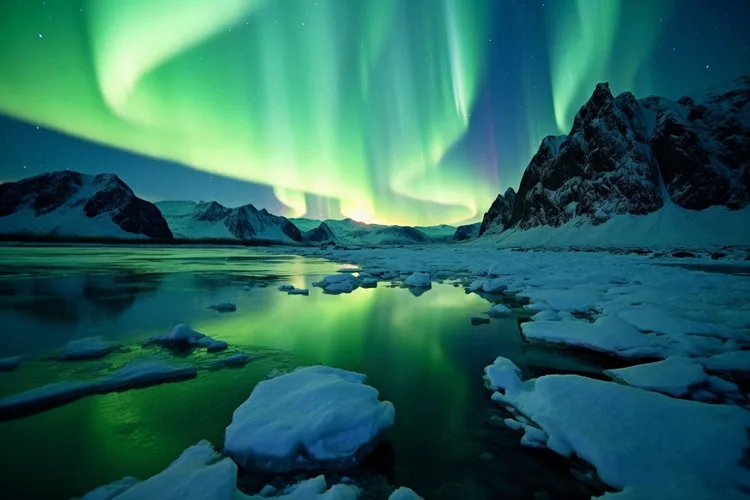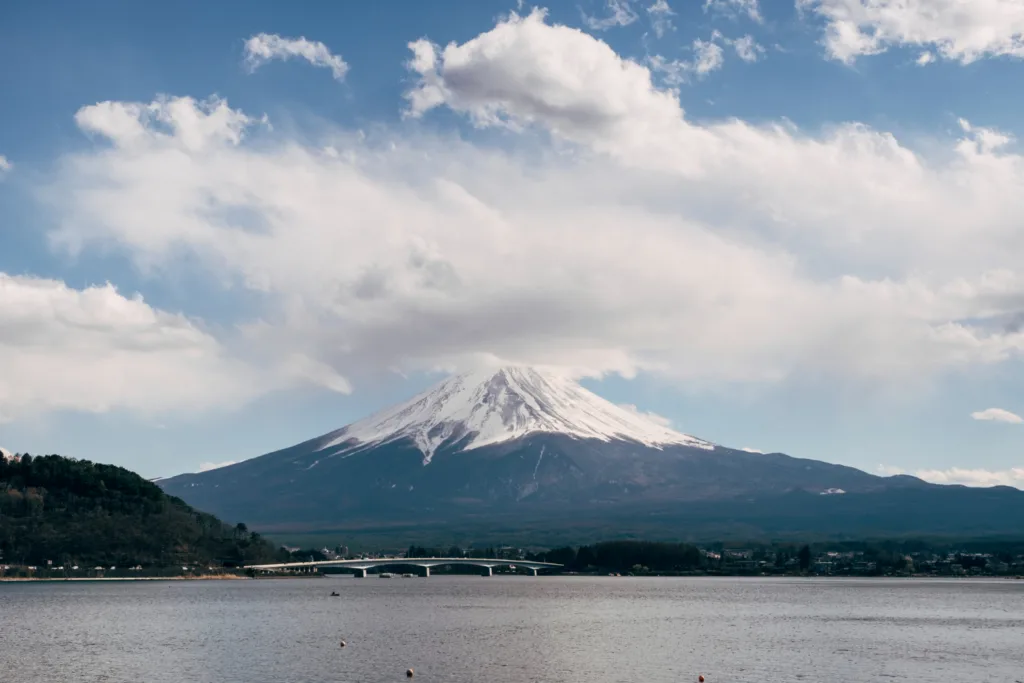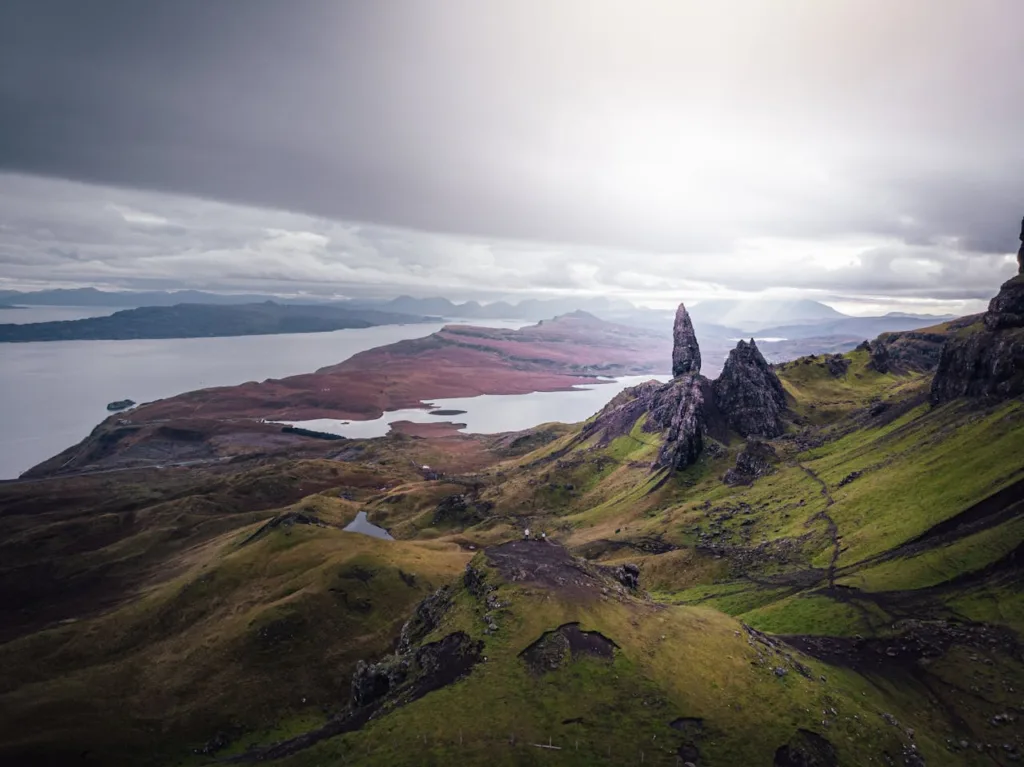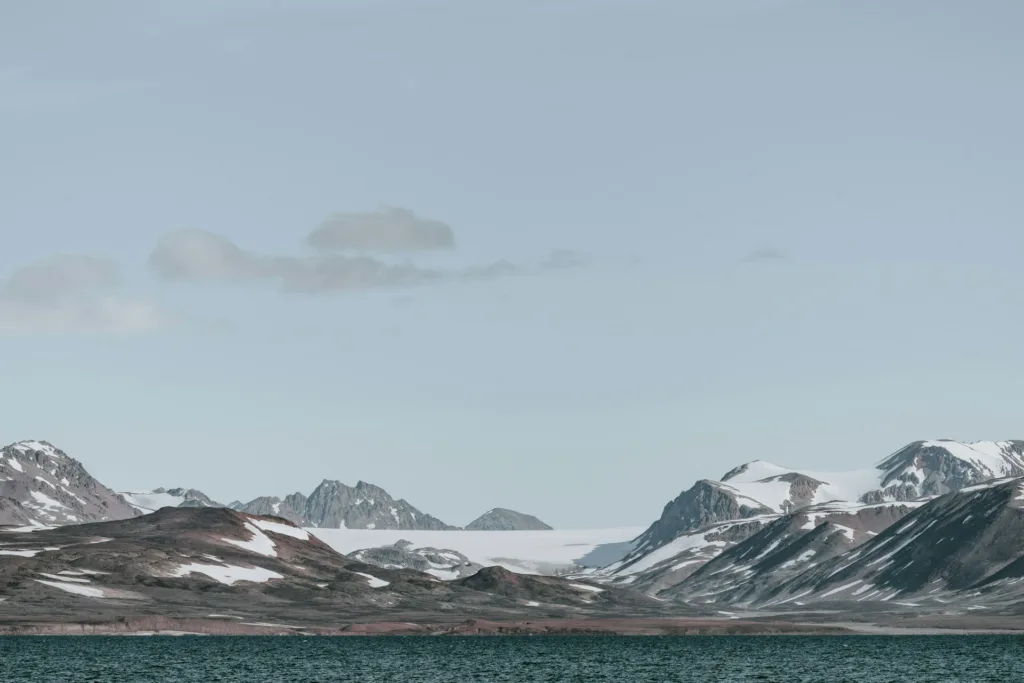When you think of islands, you might picture a quaint, picturesque retreat. However, some islands are so enormous they rival entire continents in scale and diversity. In 2024, the largest islands in the world showcase a variety of landscapes and ecosystems that are truly awe-inspiring. These massive landmasses are not just large in size but are also rich in unique cultures and natural wonders.
In this blog, we’ll delve into the top 10 largest islands in the world, each offering its own unique charm and significance. From the icy expanses of Greenland, the largest island in the world in 2024, to the lush rainforests of Borneo, these islands are remarkable for their size and the biodiversity they harbor. Whether you’re fascinated by geography or eager to learn more about these giant landmasses, this guide will provide you with an in-depth look at why these islands stand out.
Prepare to explore the largest islands in the world in 2024 and uncover the diverse features and cultures that make them so extraordinary. Let’s embark on this journey and discover what sets these islands apart from the rest!
Table of Contents
Here is the List of the World’s largest islands 2024:
1. Greenland – The Largest Island in the World 2024

Leading our list is Greenland, the undisputed largest island in the world in 2024. Covering an expansive 2,166,086 square kilometers, Greenland is a land of ice and rugged beauty. Although much of its surface is covered by a massive ice sheet, the island also boasts dramatic fjords and diverse wildlife. Greenland’s immense size and unique landscape make it the standout largest island in the world 2024.
Greenland is an autonomous territory within the Kingdom of Denmark, and its population is just over 56,000. Most of the inhabitants are Inuit, a people who have adapted to the harsh Arctic climate over thousands of years. The island’s capital, Nuuk, is a small but vibrant city that serves as the cultural and economic heart of Greenland.
But what makes Greenland truly fascinating is its role in global climate change. As one of the most rapidly warming places on Earth, Greenland’s ice sheet is melting at an alarming rate, contributing to rising sea levels worldwide. Scientists from around the globe flock to Greenland to study its glaciers, which hold clues to the future of our planet’s climate.
If you’re an adventurer at heart, Greenland offers some of the most stunning natural landscapes you’ll ever see. Imagine sailing through fjords with towering icebergs, hiking across glaciers, and witnessing the Northern Lights dance across the Arctic sky. Greenland is a place where nature reigns supreme, and every moment feels like a once-in-a-lifetime experience.
2. New Guinea – The Second Largest Island in the World

Next up is New Guinea, the second largest island in the world. Spanning 785,753 square kilometers, New Guinea is a treasure trove of cultural and ecological diversity. Divided between Indonesia and Papua New Guinea, this island is home to a wealth of indigenous cultures and is known for its rich biodiversity. It’s a major highlight on our list of the top 10 largest islands in the world.
New Guinea is a place where ancient traditions meet unspoiled nature. The island’s interior is dominated by rugged mountains, dense rainforests, and some of the most remote and unexplored regions on Earth. The biodiversity here is off the charts—New Guinea is home to thousands of species of plants and animals found nowhere else on the planet. From the vibrant Birds of Paradise to the elusive tree kangaroos, New Guinea is a paradise for nature lovers.
But it’s not just the wildlife that makes New Guinea special; the island is also a cultural melting pot. With over 800 languages spoken, Papua New Guinea alone is one of the most linguistically diverse places in the world. The island’s indigenous tribes, many of whom still live in remote villages, have preserved their traditional ways of life for centuries. Rituals, ceremonies, and art forms such as wood carving and body painting are integral parts of the island’s rich cultural heritage.
For travelers, New Guinea offers a unique blend of adventure and cultural immersion. Whether you’re trekking through the highlands, exploring the island’s pristine coral reefs, or visiting a traditional village, New Guinea promises an unforgettable journey into one of the last true frontiers of our world.
3. Borneo – The Tropical Giant

At number three on our list of the top 10 largest islands in the world is Borneo. With an area of 748,168 square kilometers, Borneo is the largest island in Asia and features a stunning array of wildlife and rainforest ecosystems. Shared by Indonesia, Malaysia, and Brunei, Borneo’s vast size and ecological significance make it a standout entry among the largest islands in the world in 2024.
Borneo’s rainforests are ancient—some are believed to be over 130 million years old, making them even older than the Amazon. These forests are a sanctuary for countless species, including the critically endangered orangutan, the pygmy elephant, and the Bornean clouded leopard. Conservation efforts are ongoing to protect Borneo’s unique ecosystems, which are threatened by deforestation and habitat loss.
One of Borneo’s most iconic landmarks is Mount Kinabalu, the highest peak in Southeast Asia, rising 4,095 meters above sea level. The mountain is a popular destination for hikers, offering breathtaking views and a chance to see rare plant species like the giant Rafflesia, the world’s largest flower.
Culturally, Borneo is a fascinating mix of indigenous traditions and modern influences. The island’s Dayak tribes, known for their elaborate tattoos and longhouses, have lived in harmony with nature for centuries. Today, visitors can learn about Dayak culture through homestays and cultural tours, where you can participate in traditional ceremonies and taste local delicacies. Whether you’re an eco-tourist, a wildlife enthusiast, or simply someone who loves to explore new places, Borneo is an island that promises adventure and discovery at every turn.
4. Madagascar – The Unique Island

Moving on to the biggest island in the Indian Ocean, we find Madagascar. Covering 587,041 square kilometers, Madagascar is often referred to as the “Eighth Continent” due to its incredible biodiversity. With a high percentage of species found nowhere else on Earth, Madagascar’s size and uniqueness make it an essential part of our list of the largest island in the world 2024.
Madagascar’s landscapes are as diverse as its wildlife. From the otherworldly limestone formations of the Tsingy de Bemaraha to the lush rainforests of the Masoala Peninsula, the island offers a wide range of natural wonders. One of Madagascar’s most famous residents is the lemur, a primate species found only on this island. There are over 100 different species of lemurs in Madagascar, each with its own unique characteristics and behaviors.
The island’s flora is just as impressive, with six of the world’s eight species of baobab trees found here. These iconic trees, with their massive trunks and unique shapes, are a symbol of Madagascar’s rich natural heritage. The island is also home to numerous species of orchids, palms, and carnivorous plants, making it a botanist’s paradise.
Madagascar’s culture is a vibrant mix of African, Asian, and Arabian influences. The Malagasy people, who are of mixed African and Austronesian descent, have a rich cultural heritage that includes music, dance, and traditional crafts. The island’s history is also deeply intertwined with its environment, as many Malagasy customs and beliefs are rooted in the natural world. For travelers, Madagascar offers an unparalleled opportunity to experience nature in its purest form. Whether you’re trekking through rainforests, exploring remote villages, or simply relaxing on the island’s pristine beaches, Madagascar is a destination that will leave you in awe of the natural world.
5. Baffin Island – The Arctic Marvel

As we head back to the Arctic, we arrive at Baffin Island, one of the largest island in the world 2024. Covering 507,451 square kilometers, Baffin Island is a remote and rugged landscape located within the Canadian Arctic Archipelago. This island is a place of extremes, where the natural world is both beautiful and unforgiving.
Baffin Island is the fifth-largest island in the world and is home to some of the most dramatic landscapes on the planet. The island’s coastline is characterized by towering cliffs, deep fjords, and glaciers that calve massive icebergs into the sea. The interior of the island is dominated by mountains and tundra, creating a stark yet stunning environment.
Despite its harsh climate, Baffin Island is home to a small population of Inuit people who have lived here for thousands of years. The island’s largest community, Iqaluit, serves as the capital of Canada’s Nunavut territory. Inuit culture is deeply connected to the land and sea, with traditional activities such as hunting, fishing, and dog sledding still playing an important role in daily life.
For adventurers, Baffin Island offers a once-in-a-lifetime experience. Imagine kayaking through icy waters, hiking across pristine wilderness, and spotting polar bears in their natural habitat. The island is also one of the best places in the world to see the Northern Lights, with the dark, clear skies providing the perfect backdrop for this natural light show. Whether you’re seeking adventure, cultural immersion, or simply the chance to experience one of the most remote places on Earth, Baffin Island is a destination that will leave a lasting impression.
6. Sumatra – The Volcanic Wonder

Sumatra, one of the largest island in the world 2024, covers 473,481 square kilometers and is renowned for its volcanic activity and rich biodiversity. This Indonesian island is home to several active volcanoes and endangered species, making it a significant and dynamic entry among the largest island in the world 2024.
Sumatra is home to several active volcanoes, including Mount Sinabung and Mount Merapi, which have shaped the island’s landscape over millennia. The island’s rainforests are among the most biologically diverse in the world, harboring critically endangered species such as the Sumatran orangutan, tiger, and rhinoceros. Conservation efforts are underway to protect these species, though they face significant threats from habitat loss and poaching.
The island’s culture is equally diverse, with a mix of indigenous traditions and influences from Indian, Arab, and Chinese traders. The Batak and Minangkabau ethnic groups are particularly well-known for their unique customs, traditional houses, and vibrant arts. For travelers, Sumatra offers a wealth of experiences, from trekking through rainforests to exploring ancient temples. The island’s natural beauty, combined with its cultural richness, makes it a must-visit destination for those looking to explore one of the world’s largest and most fascinating islands.
7. Honshu – The Heart of Japan

As we explore the top 10 largest islands in the world, Honshu stands out as Japan’s largest island. Spanning 225,800 square kilometers, Honshu is the cultural and economic hub of Japan, housing major cities like Tokyo and Kyoto. Its prominence and size earn it a top spot among the largest island in the world 2024.
Honshu is a land of contrasts, where ancient traditions coexist with cutting-edge technology. The island’s landscapes range from the towering peaks of the Japanese Alps to the tranquil shores of Lake Biwa. Mount Fuji, Japan’s highest and most famous mountain, is also located on Honshu, drawing visitors from around the world who come to hike its slopes and take in the breathtaking views.
Culturally, Honshu is the heart of Japan. The island is home to countless temples, shrines, and castles that reflect the country’s rich history. Kyoto, the former capital, is particularly famous for its well-preserved historical sites, including the iconic Kinkaku-ji (Golden Pavilion) and Fushimi Inari Shrine. Honshu is also a hub of modern Japanese culture, with Tokyo leading the way as one of the world’s most vibrant and dynamic cities. Whether you’re exploring the bustling streets of Shibuya, enjoying the serenity of a traditional tea ceremony, or witnessing the beauty of cherry blossoms in spring, Honshu offers an experience that is quintessentially Japanese.
8. Victoria Island – The Land of Midnight Sun

Returning to the Arctic, we find Victoria Island, the eighth-largest island in the world 2024, covering an area of 217,291 square kilometers. Located in the Canadian Arctic, Victoria Island is a place where the natural world takes center stage, offering a stark yet beautiful landscape of tundra, mountains, and ice-covered waters.
Victoria Island is known for its unique wildlife, including Arctic foxes, caribou, and polar bears. The island’s remote location and extreme climate make it one of the most challenging places to live, yet it is home to a small population of Inuit who have adapted to the harsh conditions over generations.
For those seeking adventure, Victoria Island offers a truly remote experience. The island’s long summer days, where the sun never sets, provide the perfect opportunity for exploring its rugged terrain. Whether you’re hiking across the tundra, kayaking through icy waters, or simply soaking in the stunning Arctic landscape, Victoria Island is a destination that offers both solitude and beauty.
9. Great Britain – The Historical Giant

In Europe, Great Britain ranks as one of the top 10 largest islands in the world. With an area of 209,331 square kilometers, this island is not only large but also historically significant. Its rich cultural heritage and historical landmarks make it an essential part of the largest islands in the world 2024.
Great Britain is home to three countries: England, Scotland, and Wales, each with its own distinct culture and history. The island’s landscapes range from the rolling hills of the English countryside to the rugged highlands of Scotland and the picturesque valleys of Wales.
Culturally, Great Britain is a treasure trove of history and art. The island boasts a wealth of historical sites, including Stonehenge, the Tower of London, and Edinburgh Castle. London, the capital, is a global city that offers everything from world-class museums to vibrant markets and theaters. For travelers, Great Britain offers a rich and diverse experience. Whether you’re exploring the bustling streets of London, hiking in the Scottish Highlands, or visiting ancient castles, Great Britain is an island that combines natural beauty with a deep sense of history.
10. Ellesmere Island – The Frozen Frontier

Our final destination is Ellesmere Island, the tenth-largest island in the world, covering 196,236 square kilometers. Located in the Canadian Arctic, Ellesmere Island is a place of extreme cold and stunning natural beauty. Ellesmere Island is known for its dramatic landscapes, including towering glaciers, ice-covered mountains, and fjords. The island is home to some of the most remote and pristine environments on Earth, making it a destination for adventurous travelers who seek solitude and natural beauty.
The island’s wildlife includes Arctic wolves, musk oxen, and polar bears, all of which have adapted to the harsh Arctic climate. The island is also one of the best places to experience the midnight sun, where the sun remains visible for 24 hours during the summer months.
For those who venture to Ellesmere Island, the reward is an experience of unparalleled beauty and isolation. Whether you’re hiking across glaciers, kayaking through icy waters, or simply taking in the stunning Arctic landscape, Ellesmere Island is a destination that offers a truly unique experience.
And there you have it—the top 10 largest islands in the world in 2024. Each of these islands offers something unique, from the icy landscapes of Greenland and Baffin Island to the tropical rainforests of Borneo and Sumatra. Whether you’re a seasoned traveler or someone who simply loves to learn about the world, these islands are sure to inspire your sense of wonder and adventure.
Exploring the largest islands in the world in 2024 is not just about visiting new places; it’s about discovering the incredible diversity of our planet. From the cultural richness of New Guinea to the pristine wilderness of Ellesmere Island, these islands are a testament to the beauty and complexity of our world.
So, which of these islands would you like to explore? Whether you’re drawn to the icy fjords of Greenland, the rainforests of Borneo, or the historical landmarks of Great Britain, each island offers a unique journey into the heart of our planet’s natural and cultural heritage. Happy exploring!



